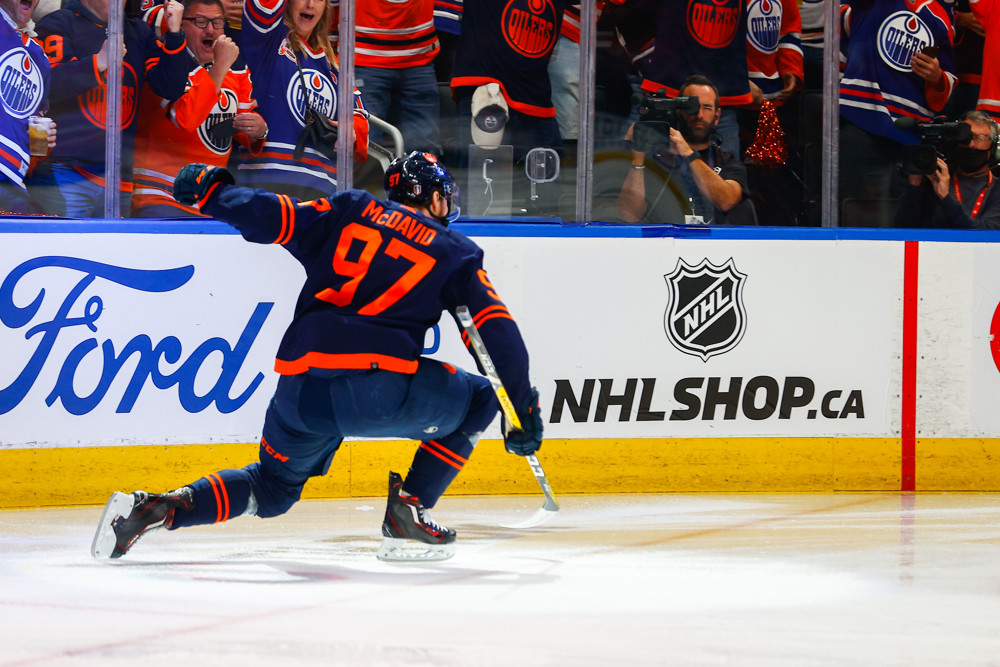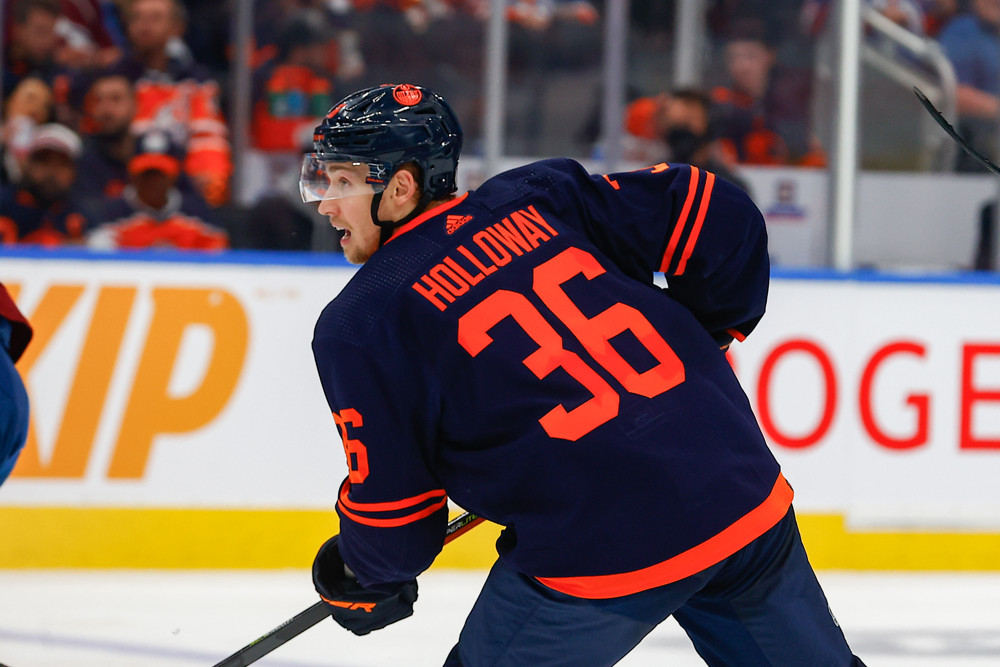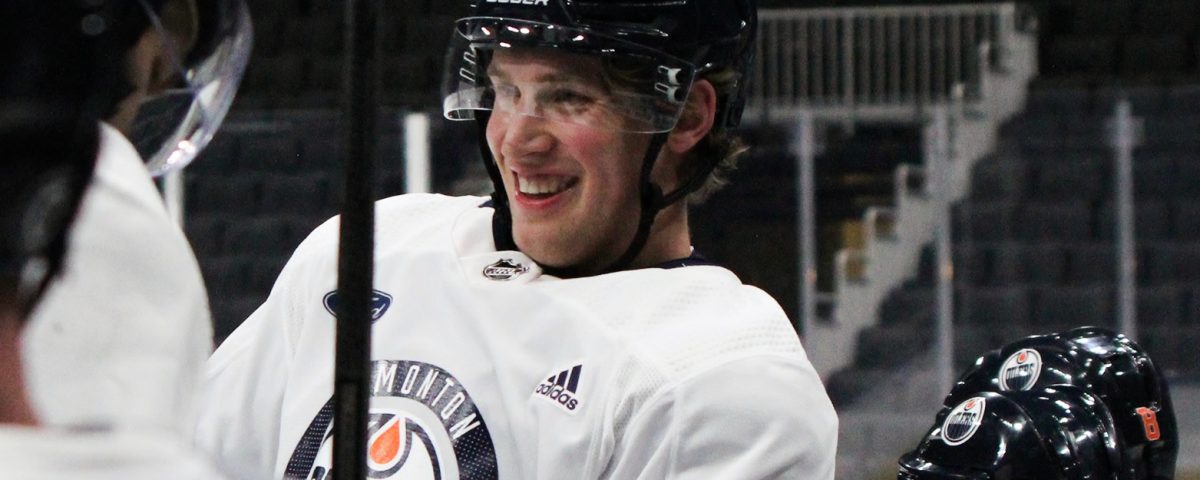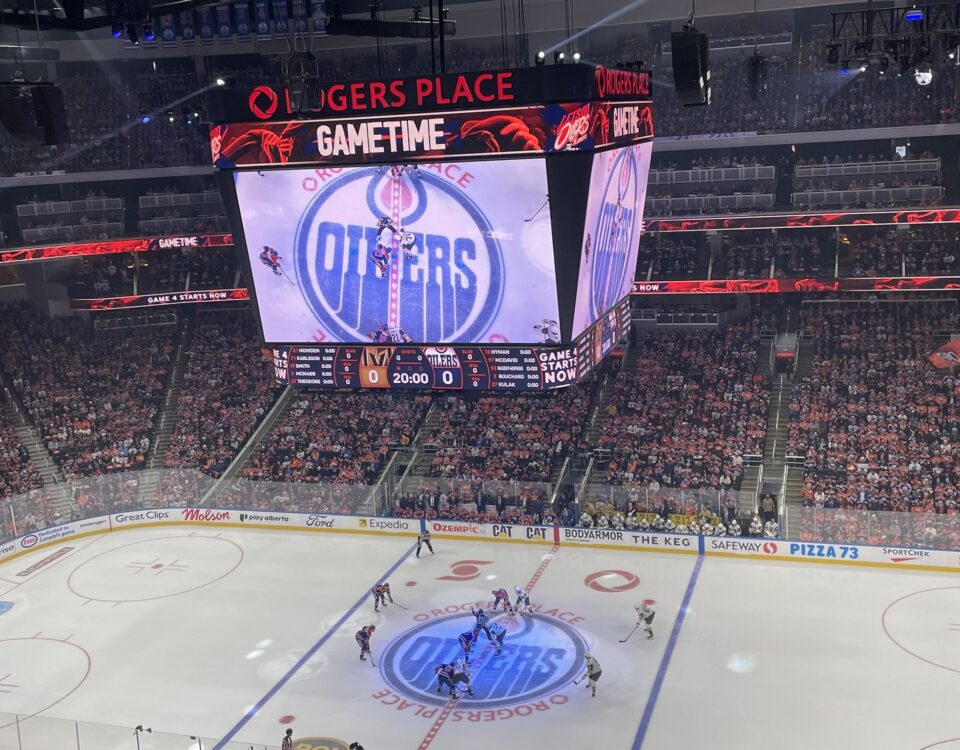
Cup or bust for Oilers in 2024
September 10, 2023
Oilers Sign Erne to PTO
September 13, 2023September 11, 2023 by Ryan Lotsberg
Dylan Holloway is the “X” factor for the Oilers this season. The rookie scored nine points in 51 games before being sent down to Bakersfield. He was injured in his first game there, but he ended up with ten points in twelve games down the stretch for the Bakersfield Condors. This year, the expectations are higher for Holloway. 2023-24 will be his fourth year since being drafted, and it will be his third professional season. Some people are talking about Holloway as a potential top six option for the Oilers. I wanted to dive in and figure out which expectations for Holloway are realistic.
Holloway is an NCAA graduate. Traditionally, NCAA players take a little bit longer to develop because the league caters to “late bloomers”. The typical age range for NCAA hockey players is 18-24, while the CHL features players 16-20 years old. NCAA players are not allowed to play in the CHL before entering college, so they are forced to play in lower level leagues like the CJHL and the USHL until they’re able to enter college hockey.
It doesn’t mean that taking the NCAA path automatically means a player isn’t as good as a player taking the CHL route. It just means that it takes longer to get a sense of how their games will translate to the NHL level because they play in a lower league until their draft or draft plus one year.

There are exceptions to the rule, such as Cale Makar and Alex Newhook being drafted out of the CJHL. There have been several players from the US National Development Team that plays in the USHL to be drafted high in recent years. Elite players are going to get found no matter where they’re playing. My point is that outside of the truly elite players, players that take the NCAA route generally take a little bit longer to develop than their CHL counterparts.
I’ve gone through the archives of NHL players to come out of the NCAA this century. It wouldn’t be fair to compare Holloway to players taken in the top three in the draft like Jack Eichel, Matty Beniers, James van Riemsdyk, or Jonathan Toews. It’s not fair to compare him to top ten picks like Trevor Zegras, Phil Kessel, Clayton Keller, or Brady Tkachuk either. It’s also not fair to compare him to players taken 20th or later in the first round like Tage Thompson, Brock Boeser, Max Pacioretty, or Kyle Palmieri; or the wealth of players drafted outside the first round like Joe Pavelski, Johnny Gaudreau, Jake Guentzel, and Zach Hyman.
Instead, I’m going to compare Holloway to players drafted near his draft position (14th overall), so players drafted from tenth to twentieth. I looked at how many years it took for these players to become NHL regulars (the year they made the NHL and never went back to the AHL), as well as how well they did in those seasons in the NHL. Here’s the list:
| Player | Draft Position | NHL Regular | Points | Games | Points/Game |
| Matt Boldy | 12 | D+4 | 63 | 81 | 0.78 |
| Cole Caufield | 15 | D+3 | 43 | 67 | 0.64 |
| Kyle Connor | 17 | D+3 | 57 | 76 | 0.75 |
| Jaden Schwartz | 14 | D+4 | 56 | 80 | 0.7 |
| Chris Kreider | 19 | D+5 | 37 | 66 | 0.56 |
| Nick Bjugstad | 19 | D+4 | 38 | 76 | 0.5 |
| Alex Tuch | 18 | D+4 | 37 | 78 | 0.47 |
| Alex Newhook | 16 | D+3 | 37 | 78 | 0.47 |
| Joel Farabee | 14 | D+2 | 21 | 52 | 0.4 |
| Tyson Jost | 10 | D+4 | 23 | 67 | 0.34 |
| AVERAGE | 15.4 | 3.6 | 41.2 | 72.1 | 0.56 |
| Dylan Holloway | 14 | Entering D+4 | TBD | TBD | TBD |
Holloway is entering his draft plus four season, which means he’s already slightly behind the pace of the average player in this group. That should be expected due to his recent injury history. Injuries have played a massive role in slowing Holloway’s development. The fact that he played in 51 NHL games last season is a sign that he’s close, but he ultimately finished the season in the AHL. Five players in this group became true NHL regulars in their draft plus four seasons, so the odds are strong that Holloway will follow suit.
Holloway had 35 points in 23 games in his last year of college hockey. Out of this group, only Connor, Caufield, and Boldy had a higher points per game average in their final season of college hockey than Holloway had. That’s an encouraging sign. His draft position being slightly higher than average in this group is also encouraging, as little as it means in reality. Those factors point to Holloway surpassing the average of 41.2 points for this group of players.
The average production of the five players that broke out in their draft plus four years is 43.4 points. The average points per game for those five players was 0.56, which would work out to 45.92 points in 82 games. Holloway outproduced four of these five players in their final years of college, which would suggest that Holloway is likely to surpass the average.
However, let’s pump the brakes for a minute here. Deployment is a big factor in this equation. Holloway was used sparingly in his 51 games last year. His average ice time was 9:35 per night. He was an extra forward in the eleven and seven configuration so often used by head coach Jay Woodcroft last season, or he was on the fourth line. Woodcroft’s heavy reliance on Connor McDavid and Leon Draisaitl left little ice time for players like Holloway last season.
Woodcroft, McDavid, and Draisaitl are still in Edmonton, so the coach’s reliance on those two players isn’t likely to change this season. Holloway will have a chance to earn a bigger piece of the pie if he can fight his way into the top nine. However, I don’t see his utilization allowing him to get up to the average 41.2 points that the players in this group produced in their first seasons as true NHL regulars. He would need to be playing on a skill line with McDavid or Draisaitl from day one while playing over sixteen minutes a night to reach that level of production. I just don’t see him playing in the top six unless an injury were to occur. I certainly don’t expect him to start the season in the top six.
Related: 5 Potential Fantasy Hockey Busts In 2023-24
The comparisons to his fellow NCAA graduates drafted at or near his draft position suggest third line deployment is a floor for Holloway this season. Ryan McLeod is going to be the third line centre for the Oilers this season. McLeod scored at a pace of 0.4 points per game last season, which is a 33-point pace. Natural career progression and potentially getting an increase in talent on his wing with Holloway should help McLeod continue to improve his output.
It’s entirely reasonable to expect Holloway to land in the mid to high thirties for a point total if he plays in all 82 games for the Oilers this season. For the sake of entertainment value and a firm statement to close this piece, I’ll predict that Holloway will score sixteen goals and get twenty one assists for a total of 37 points.


